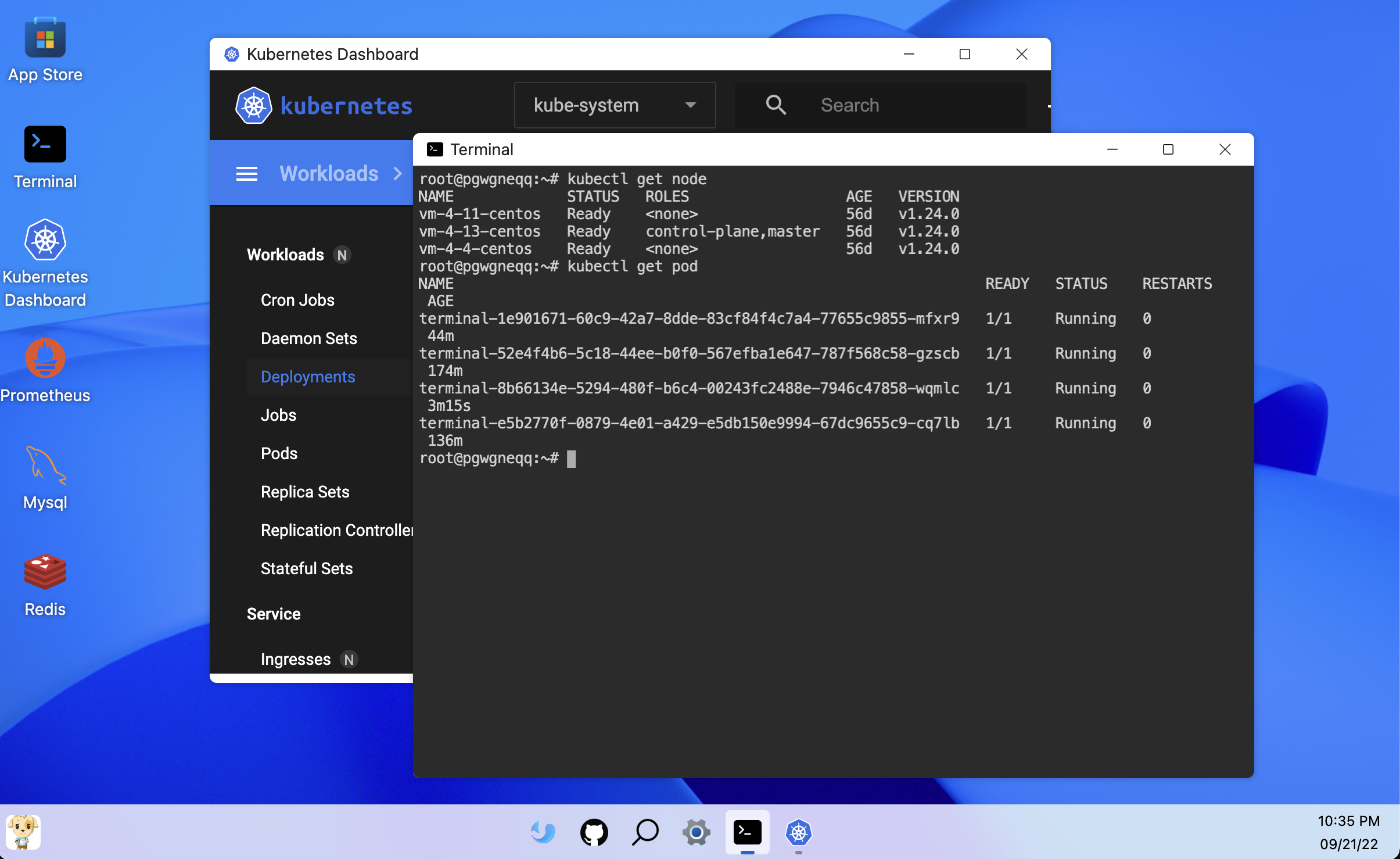sealos is a cloud operating system distribution based on Kubernetes.
- From now on, think of all your machines as an abstract supercomputer whose operating system is sealos, where Kubernetes serves as the OS kernel.
- Instead of IaaS, PaaS and SaaS, there will only be cloud OS drivers(CSI, CNI and CRI implementations), cloud OS kernel(Kubernetes) and distributed applications.
Use the cloud like a PC desktop, Freely run and uninstall any distributed applications:
Some Screen Shots of sealos:
| redis on sealos cloud | redis on sealos cloud |
 |
 |
| pgsql on sealos cloud | pgsql on sealos cloud |
 |
 |
- Manage clusters lifecycle
- Quickly install HA Kubernetes clusters
- Add / remove nodes
- Clean the cluster, backup and auto recovering, etc.
- Download and use OCI-compatible distributed applications
- OpenEBS, MinIO, Ingress, PostgreSQL, MySQL, Redis, etc.
- Customize your own distributed applications
- Using Dockerfile to build distributed applications images, saving all dependencies.
- Push distributed applications images to Docker Hub.
- Combine multiple applications to build your own cloud platform.
- Sealos cloud
- Run any distributed applications
- Have a full public cloud capability, and run it anywhere
Installing an HA Kubernetes cluster with calico as CNI
Here kubernetes:v1.24.0 and calico:v3.24.1 are the cluster images in the registry which are fully compatible with OCI standard. Wonder if we can use flannel instead? Of course!
# Download and install sealos. sealos is a golang binary so you can just download and copy to bin. You may also download it from release page.
$ wget https://github.com/labring/sealos/releases/download/v4.1.3/sealos_4.1.3_linux_amd64.tar.gz && \
tar -zxvf sealos_4.1.3_linux_amd64.tar.gz sealos && chmod +x sealos && mv sealos /usr/bin
# Create a cluster
$ sealos run labring/kubernetes:v1.25.0 labring/helm:v3.8.2 labring/calico:v3.24.1 \
--masters 192.168.64.2,192.168.64.22,192.168.64.20 \
--nodes 192.168.64.21,192.168.64.19 -p [your-ssh-passwd]- Supported Kubernetes versions: 240+ Kubernetes versions Kubernetes use cri-docker runtime
- Other distributed applications images
Single host
$ sealos run labring/kubernetes:v1.25.0 labring/helm:v3.8.2 labring/calico:v3.24.1 --single
# remove taint
$ kubectl taint node --all node-role.kubernetes.io/control-plane-
$ kubectl taint nodes --all node-role.kubernetes.io/master:NoSchedule-Building a custom cluster image
See Building an Example CloudImage.
Storage, message queue, database, etc.
Don't be shocked by the following:
sealos run labring/helm:v3.8.2 # install helm
sealos run labring/openebs:v1.9.0 # install openebs
sealos run labring/minio-operator:v4.4.16 labring/ingress-nginx:4.1.0 \
labring/mysql-operator:8.0.23-14.1 labring/redis-operator:3.1.4 # onelinerAnd now everything is ready.
sealos run labring/kubernetes-docker:v1.20.5-4.1.3 labring/calico:v3.24.1 \
--masters 192.168.64.2,192.168.64.22,192.168.64.20 \
--nodes 192.168.64.21,192.168.64.19 -p [your-ssh-passwd]- Contribution Guidelines
- Development Guide
- sealosAction
- sealos 3.0(older version) For older version users. Note that sealos 4.0 includes significant improvements, so please upgrade ASAP.
- buildah Capabilities of buildah is widely used in sealos 4.0 to make cluster images compatible with container images and docker registry.
Join us: Telegram, QQ Group(98488045), Wechat:fangnux





